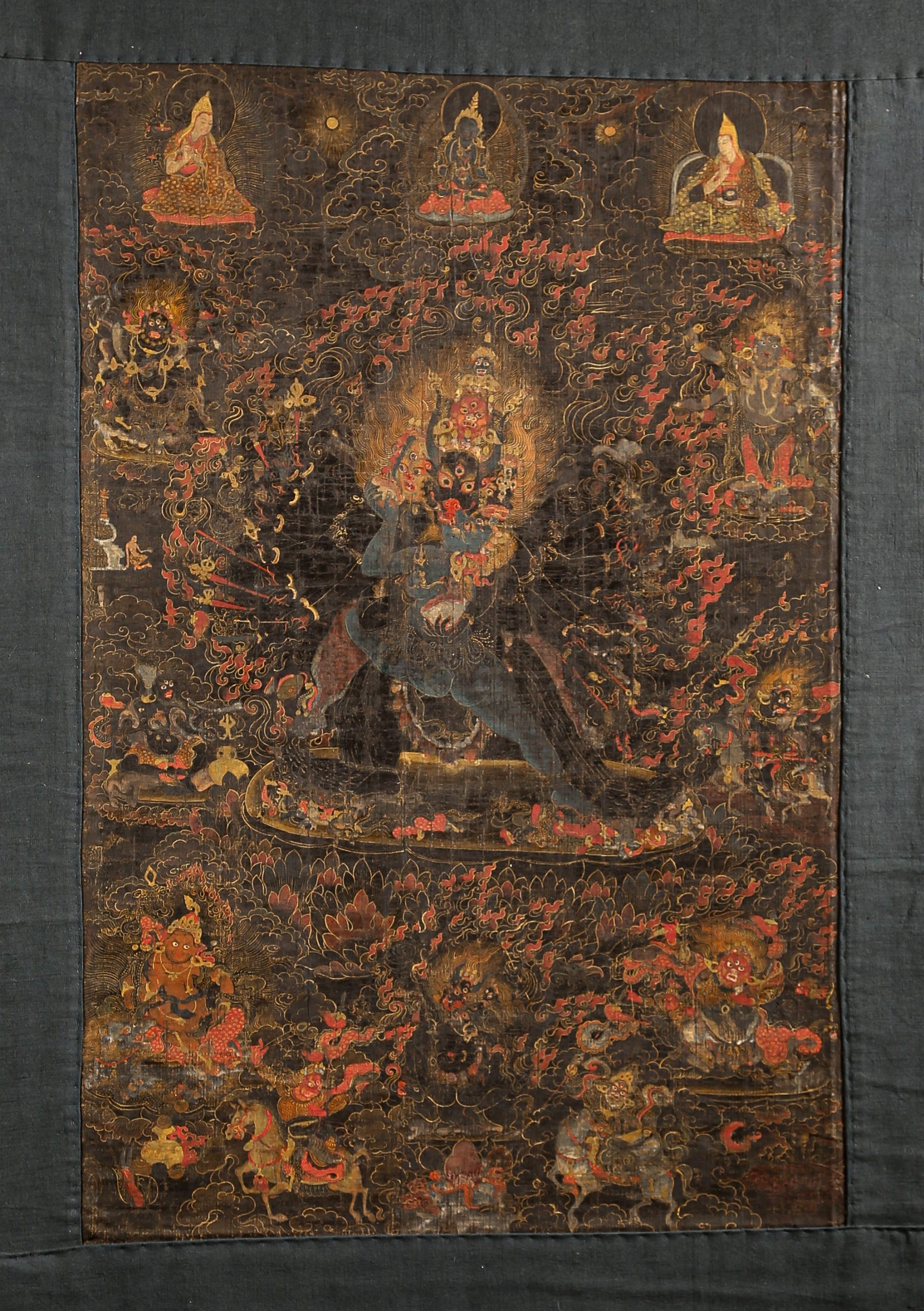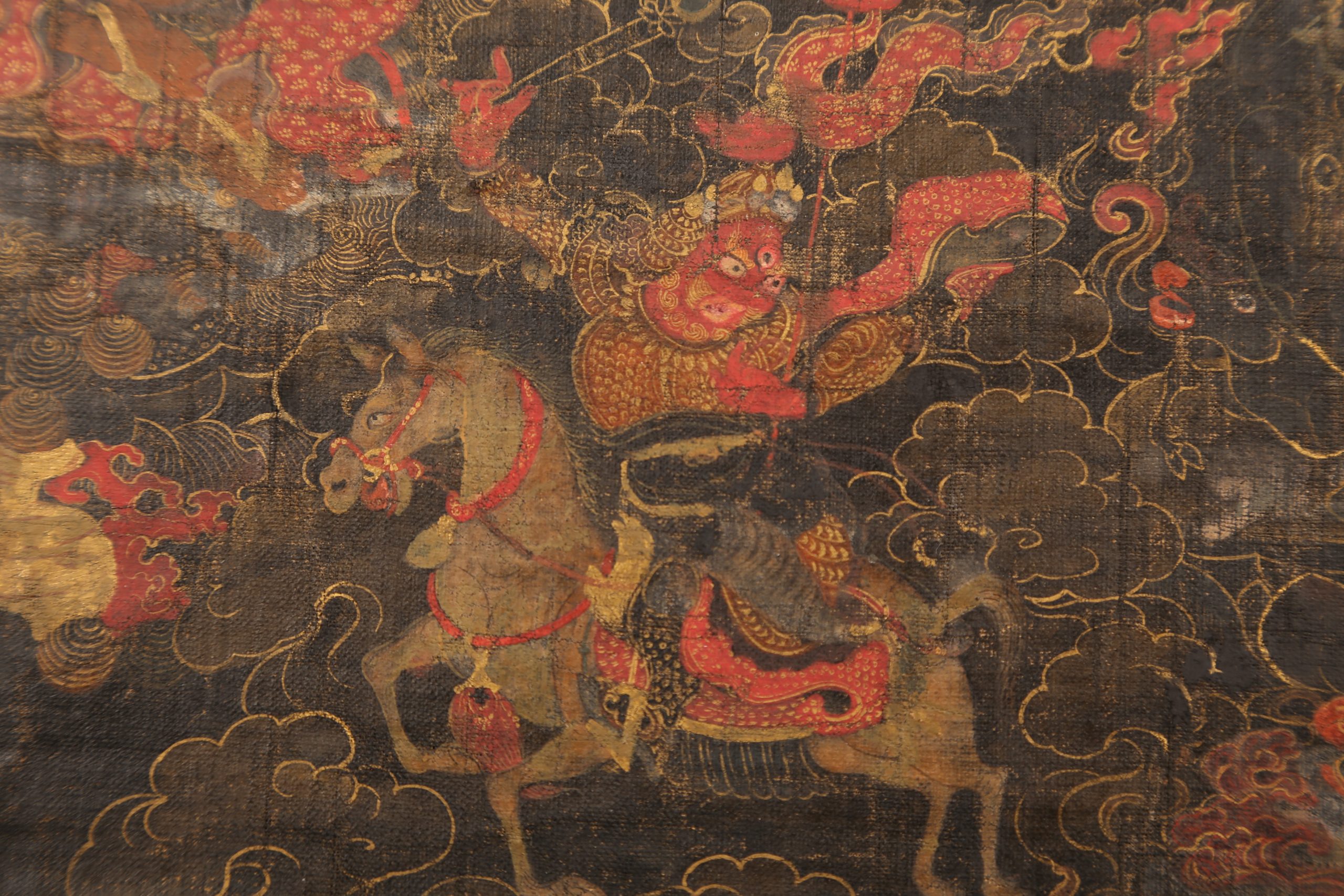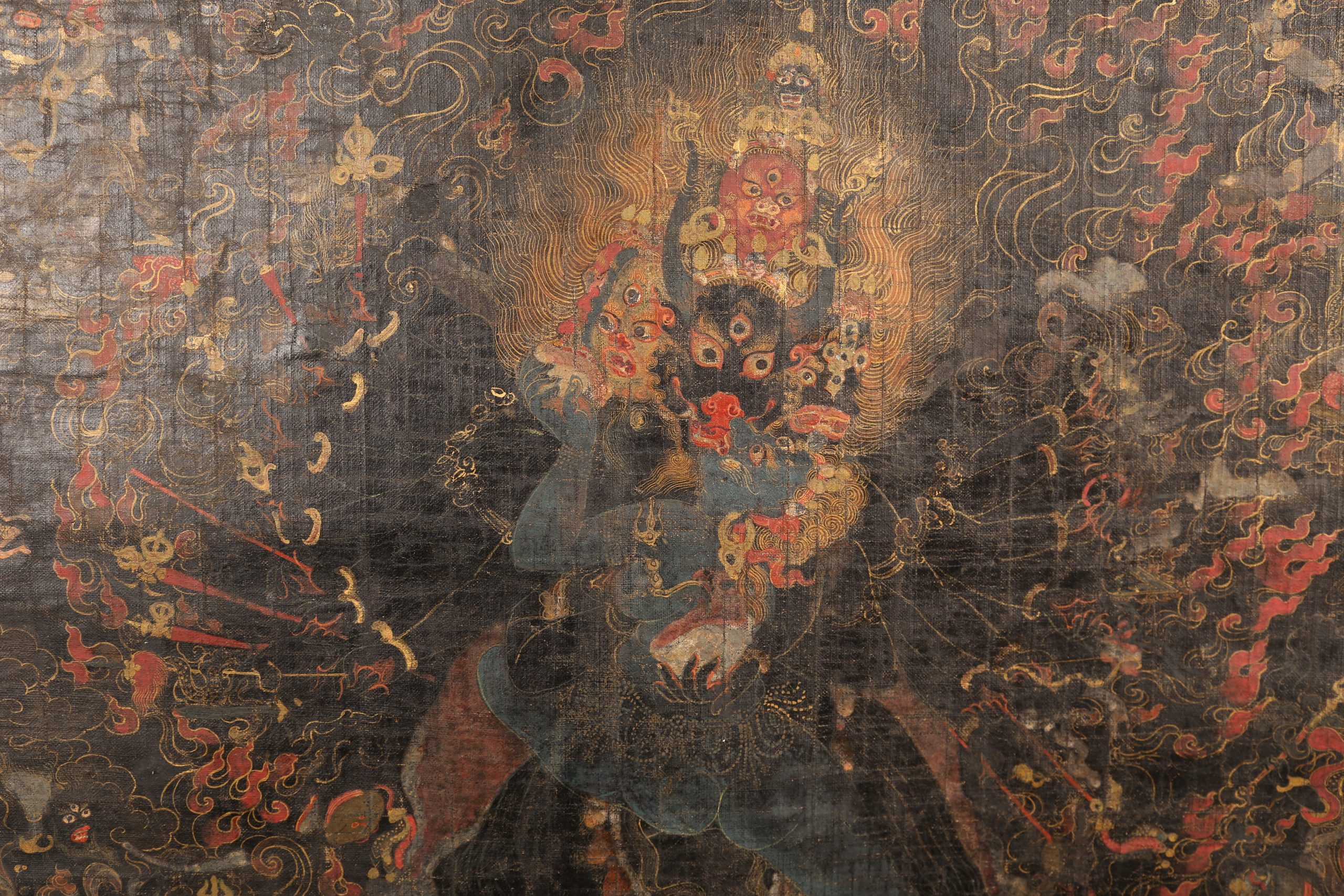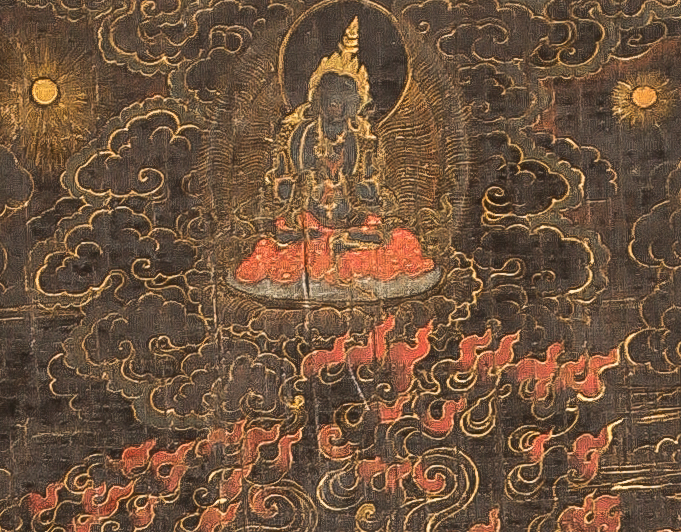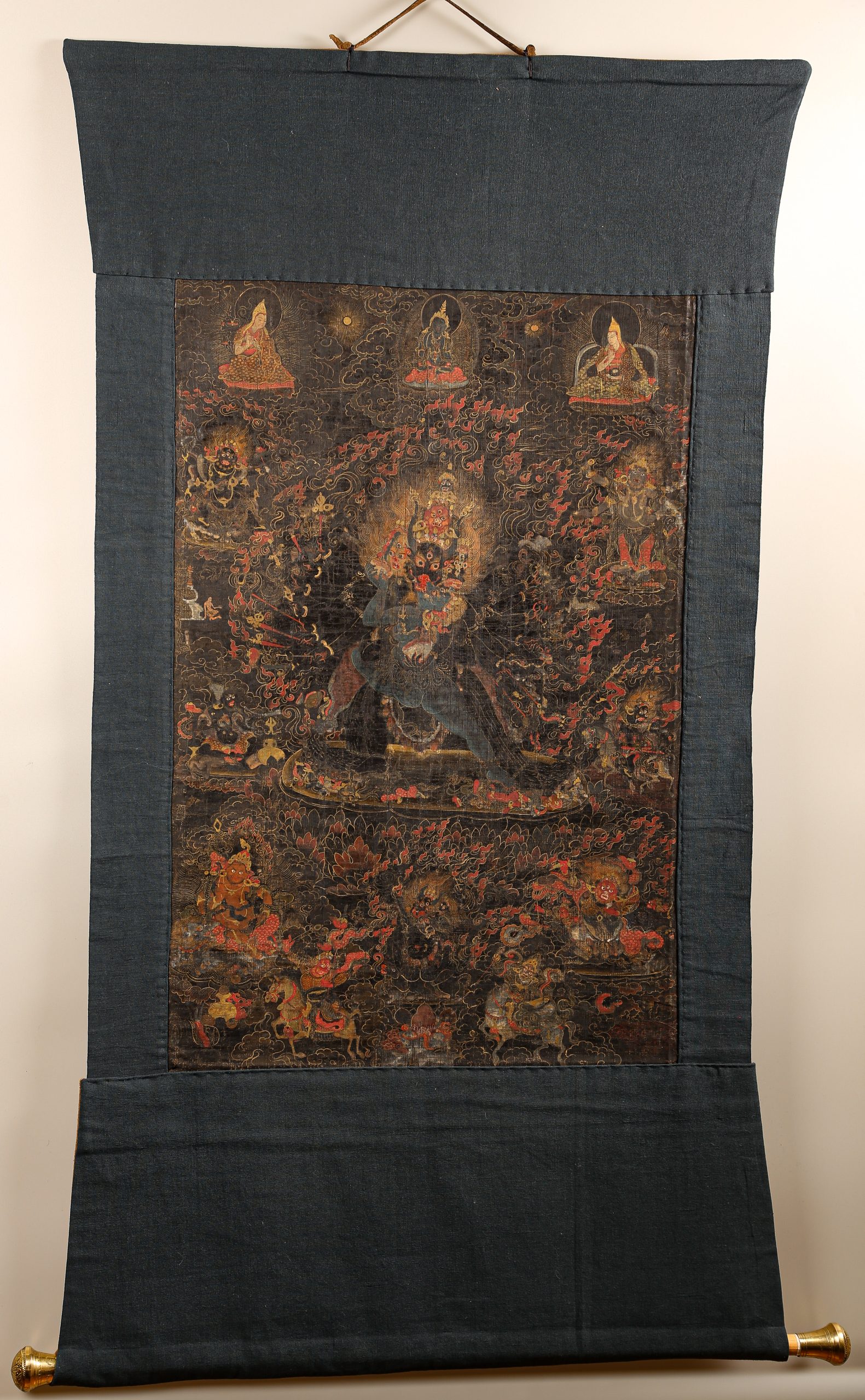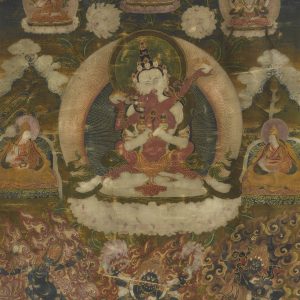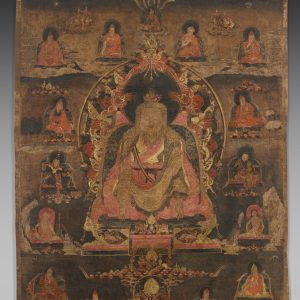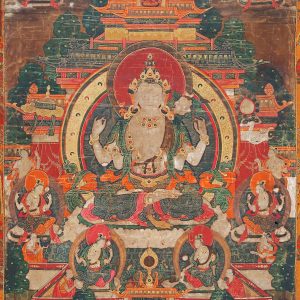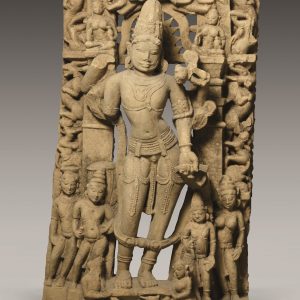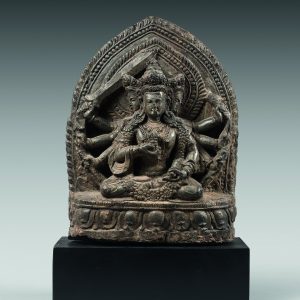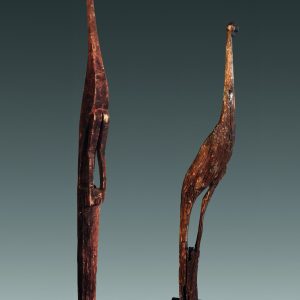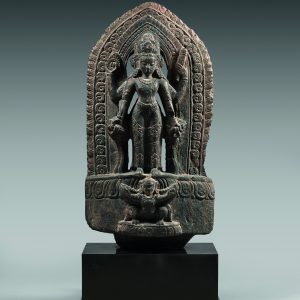Mahāvajrabhairava
Tempera on canvas
Tibet
18th century
D. 73 x 50 cm or 28 ¾ in
Description
In Tibetan Buddhism, Mahavajrabhairava, “the Great and Diamond-like Ferocious One”, is one of the eight main guardians of the doctrine. The fierce aspect of the bodhisattva Manjushri, this deity “subjugates Yama” and “vanquishes death” (Yamantaka). He is sometimes designated by this latter name in bibliographies. The god is said to have been able to extinguish the fire of passions and dissipate the obscurity born of error, two things necessary before being freed. He was promoted to the rank of tutelary deity (Yidam), among others, by the dGe-lugs-pa monks. Iconography depicts him as a particularly terrifying being. Of his nine multicolored heads, the bull’s head contrasts with the other fierce heads as well as the peaceful face of Manjushri at the top of the pyramid.
The god is holding his companion Vetali. With his thirty-four arms, he wields various weapons and macabre trophies. His two main hands hold the cleaver and the skull cup. The other hands in the center right: the arrow, spear, hatchet, spear encircled by a snake, a bouquet of peacock feathers and one end of an elephant’s hide. In the right rear hands: the hour-glass drum with striking balls, sword, hammer, “diamond-lightning”, a pike with a vajra on top, trident, sledgehammer with the vajra on the end and a hatchet. In the center left hands: the bell, triple head of the Hindu god Brahma and the other end of the elephant hide. In the left rear hands: the baton, a flower, the menacing gesture, a sacrificial area, an impaled man, the menaing gesture and a human arm.
All around are various protectors of the religion (dharmapala). For instance, above the right shoulder we recognize Mahakala in his Sadbhuja aspect, the most common one. To match him, above the left shoulder, stands a more rare form of the god: the six-armed Sitacintamani, holding the jewel in his main hand, said to be the protective god of Emperor Qianlong (1736-1795). Lower down, on the left, the ascetic Mahakala Brahmanarupadhara prepares to blow a trumpet of human bone. Across fom him, the goddess dPan-Idan lha-mo rides her mule. Below that, from left to right, are Kuvera, the god of the treasures of the world, holding a pouch of mongoose skin overflowing with jewels; Yama, the god of death, with his arm around his incestuous sister Yami, standing on a bull; and finally Beg-tse preparing to eat the bleeding heart freshly ripped from the chest of a sinner.
Finally, at the bottom of the image, ridesrDor-je bse’i-krab-can, gesticulating with a baton to scare off the hordes of demons, and Phying-dhar-ba, god of one of the mountains of Amdo, the native region of the reformer Tsong-kha-pa (1357-1419), white-faced and wielding a spear.
At the top, Vajradhara, the supreme buddha, is surrounded by two senior figures of dGe-lugs-pa.
The painting is part of the apogee of the sMan-bris style (circa 1650-1750), delicately gilded. The particularly dark shades liken it to the famous black Thang-kas (Nag-thang), reserved for the fierce deities that spring from the darkness like phantoms.
Provenance: Bortolot Collection. Navin Kumar Gallery, New York, October 1990.
HAR – Himalayanart.org/items/61457

